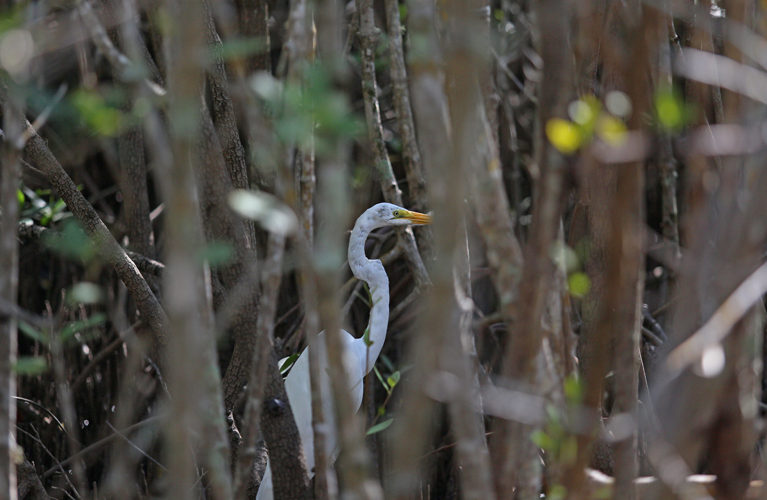
The Indian River Lagoon is in grave peril, “much worse than any other estuary in Florida”, warned one of the most respected ichthyologists on the planet – scientist, diver and longtime lagoon champion Dr. Grant Gilmore, speaking to the Pelican Island Audubon Society last Monday at the Vero Beach Community Center.
Gilmore will tell you that “fish talk to each other,” and he can recognize a fish species from the sounds it makes. He’s intimately familiar with every aspect of the 156-mile long estuary and its denizens, widely recognized as one of the richest and most diverse marine environments in North America, and has been sounding the alarm on its behalf for years, now more urgently than ever, as evidenced in his presentation title, which asked, “Why are Indian River Lagoon aquatic species, fish and wading birds, disappearing?”
The answer is inexorably tied to the lagoon’s fragile, failing health, which impacts the fish and birds that call it home and depend on it for their habitat, sustenance, spawning, nurseries. “If a spawning location disappears, a tropical species can’t go anywhere else and suffers the consequences.”
Gilmore’s assessment of why this is happening, based on thousands of hours in and around the lagoon over many decades, can be boiled down to cartoon strip character Pogo’s comment, upon seeing the trash-strewn Okefenokee Swamp, “we have met the enemy and he is us.”
What may ultimately sound the death knell for our greatest natural treasure, Gilmore asserts, is nitrogen-containing nutrient run-off, from a variety of sources, all eventually boiling down to “us.” Septic tanks and biosolids (human poop), reuse water, Round-Up, fertilizers, and other commercial and private-use chemicals contribute immensely to entire fish and bird species becoming endangered.
Nitrogen-rich runoff results in algal blooms — thick, green muck –which fluxes nitrogen, consumes oxygen and blocks sunlight from aquatic plants, creating “dead zones,” diminishing habitat and food for fish and wading birds, toppling the food chain from the tiniest, microscopic diatoms on up.
Exacerbating the problem for the Treasure Coast section of the lagoon, Gilmore explained, is that it is far narrower here than in other parts of its length, making it more difficult for it to effectively flush itself.
Kathleen Hill, Indian River Lagoon Council deputy director, agrees that the “primary cause” of the estuary’s current dire situation is nutrient-rich stormwater and wastewater runoff. She emphasizes that there is “no one specific cause,” and thus “no silver bullet,” but adds that “every project in the ground, we consider progress.”
Audubon President Richard Baker agrees the Lagoon’s situation is grave, and that each citizen can and should take action. Baker suggests “start in your own backyard: reduce turf by at least half, then take advantage of Audubon’s current 10-year project: to provide 100,000 free native trees and plants,” significantly reducing the “need” for Lagoon-damaging chemicals.
Gilmore believes many who pay millions to live near the water or who work on the water often don’t know what goes on beneath the surface.
“You must get (them) to understand where the fish come from.” People who care about the lagoon, he urged, must spread the word. Saving the Lagoon is still doable, but the clock is ticking and it will require everyone to take action: individuals, businesses, conservation organizations, government agencies.



